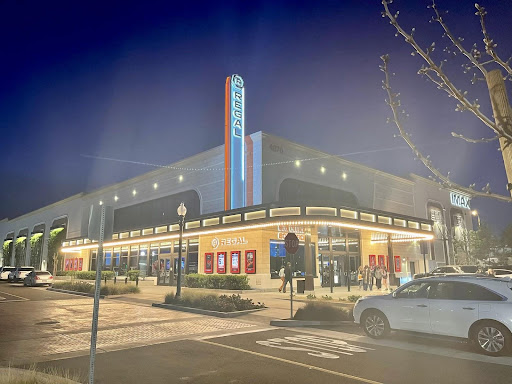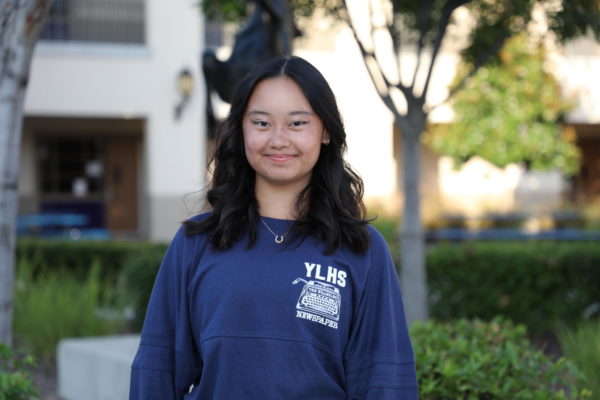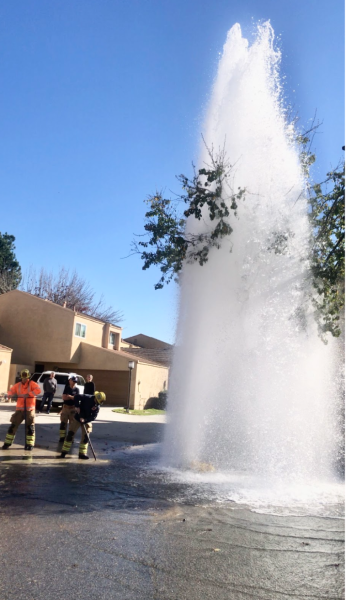Film in the Age of Coronavirus

Despite first opening in April 2019, the Regal Movie Theater at the Yorba Linda Town Center had to shut down temporarily in 2020 due to COVID-19 restrictions.
March 29, 2022
Since 2020, the Coronavirus has swept through the world drastically shifting the way people spend their time. At first, time stood still as everyone was stunned by “two weeks to slow the spread.” Gradually, the people took to dog parks and hiking trails to get fresh air, learned Latin and Urdu, picked up the violin and clarinet, and finally had the time to learn how to cook for themselves. Instead of going to school normally, kids in the US powered up their computers and zoomed into classes. At a larger scale, companies learned how to keep going by having employees work remotely or (if necessary) relieving their financial issues by letting employees go. However, one specific aspect of society has had to learn how to roll with these changes and more in a very unique way: the film industry.
One defining aspect of COVID-19’s impact on the industry is that it inspired television writers to incorporate it into the plots of their shows. Whether out of necessity or to keep up with the times, many medical dramas portraying doctors, nurses, and other healthcare personnel working in hospitals filmed episodes that depicted the spread of COVID-19 through the quarantine of workers, treatment of patients, and implementation of guidelines to stop the spread. Mainstream television dramas such as ABC’s The Good Doctor and CBS’s All Rise have had characters doing things that have been normalized throughout the pandemic such as holding virtual meetings and wearing masks. Other shows like Comedy Central’s animated South Park and NBC’s skit comedy show Saturday Night Live have also adapted the topics of their humor to fit the public’s interest amidst the pandemic (The Wrap). Despite the controversy of the method, it is a surefire sign of the times.
Another identifying feature of this phenomena is the change in theatrical release strategies. By the time new movies did get released, brick-and-mortar movie theaters were virtually all shut down or temporarily closed to prevent the spread of the Coronavirus, so those without online streaming deals were basically destined to be box-office failures. Even then, some large movies with on-demand agreements including Universal Pictures’ Doolittle, were box-office flops with an estimated loss of $50-100 million. For example, despite the popularity of Disney’s Mulan, it was also a failure with a surprising price of $142 million lost (Box Office Mojo). The struggle to keep movies and television alive helped grow streaming services like Netflix and Disney+, which in turn influenced the future of entertainment (RBC Wealth Management). The decline of home-media like DVDs was amplified, continuing the dawn of the new age of digital entertainment. As for the future of films, Madison Ems (10) has a prediction. She believes that “more films will be released on streaming services” without making brick and mortar movie theaters obsolete.
A third adjustment that occurred during the beginning of the COVID-19 pandemic were the changes regarding production timing. Some blockbuster films were scheduled to be released at around the same time as when the pandemic started. As a result, most were delayed. Marvel’s Eternals was supposed to be released on November 6th of 2020, but after a series of extensions, it made its world premiere on October 18th of 2021 (IMDb). Many movies were released a year later in 2021, such as Sony’s Peter Rabbit, Disney’s Raya and the Last Dragon, and Universal Pictures’ F9 (Fast & Furious 9) (screenrant.com).
Despite the hardships of the Coronavirus, the moving picture industry has learned to modify its practices through creatively using it as narrative material, analyzing the most successful releasing approaches, and adjusting to the normalcy of delays.




















